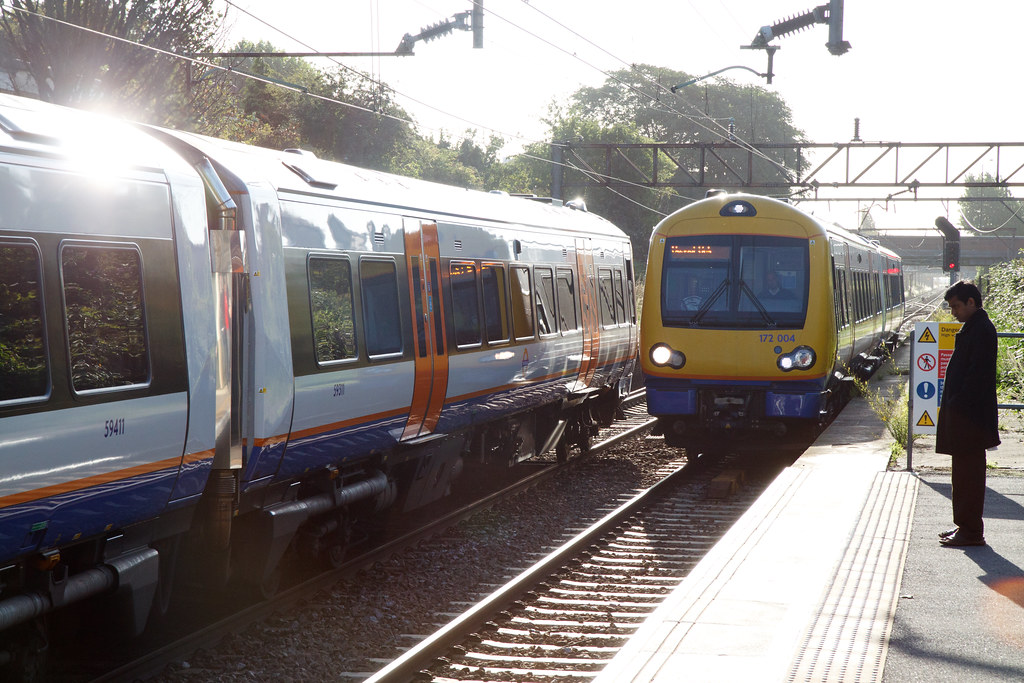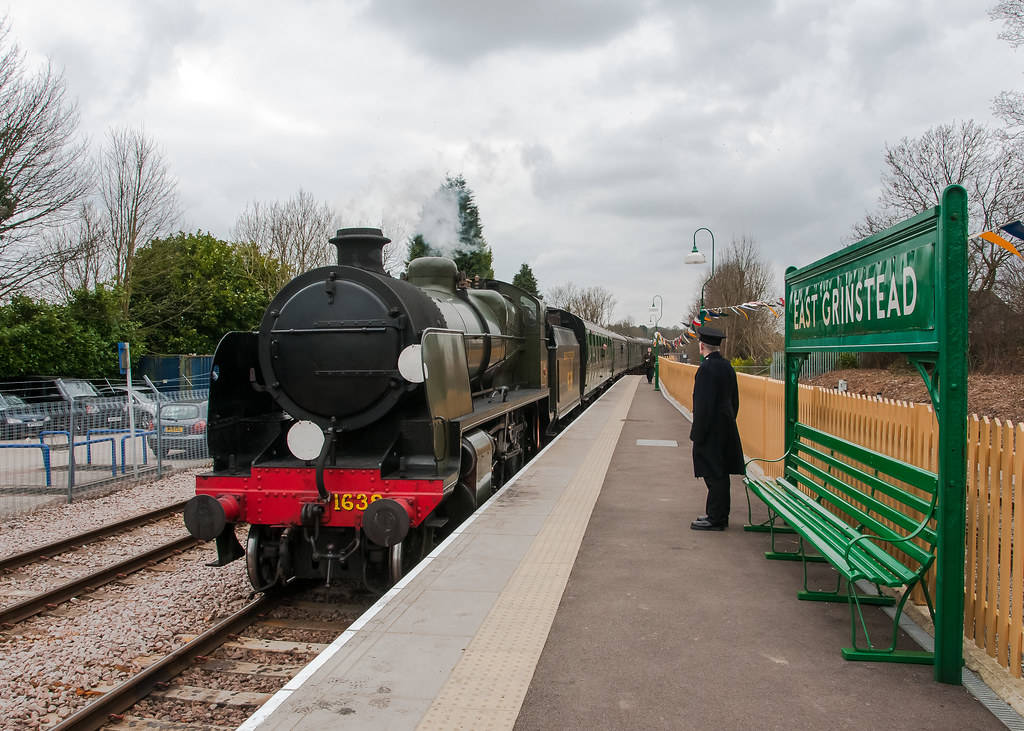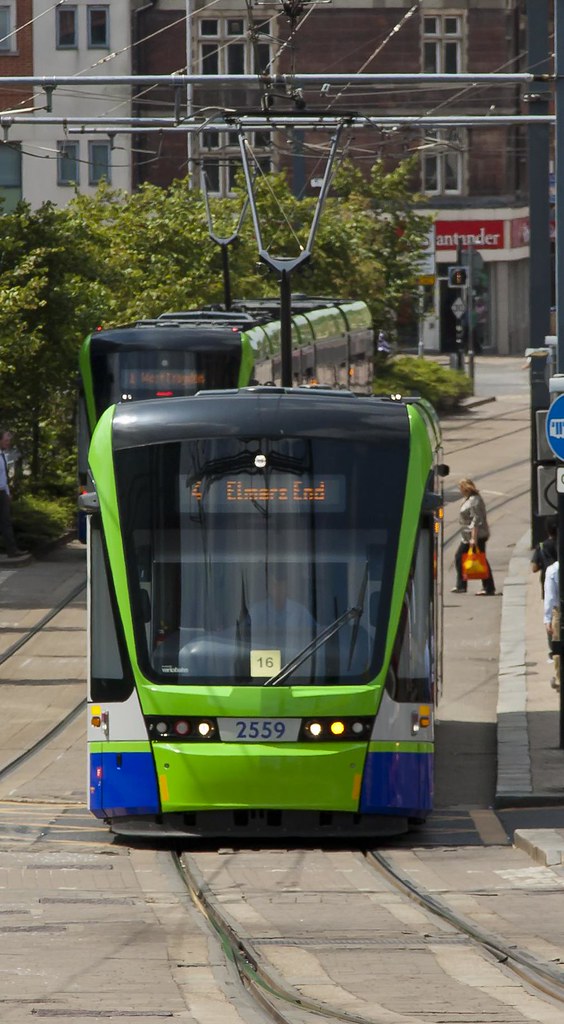Building King’s Cross Square
With the Western Concourse now open and the Olympics & Paralympics finally over, work to demolish the 70’s concourse has been taking place over the last few months. Once complete in the coming weeks, the area will be transformed into a new piazza providing pleasant views of the original 1850’s facade of King’s Cross.
• Video Link
West Anglia Service Devolution
It has recently been announced that the West Anglia suburban rail services (currently managed by the rail franchise operator Greater Anglia) will be devolved to Transport for London. These are a collection of lines from London Liverpool Street and Stratford that are in the Lea Valley growth corridor with differing levels of service. The route up to Hertford East is anticipated to become the northern terminus of Crossrail 2.
The Mayor has been pushing to take over more of these services as the train operators typically concentrate on the longer distance commuter services from beyond London which are more lucrative. Unfortunately a similar approach to taking over Southeastern’s lines into Dartford in south-east London was unsuccessful, however if a similar ‘Overground’ renaissance occurs on the West Anglia routes, it could lead to the Mayor gaining control over other commuter routes. Source:
http://www.tfl.gov.uk/corporate/medi...tro/28216.aspx
 Image source from Greater Anglia: http://www.greateranglia.co.uk/trave...ng/network-map
Gospel Oak-Barking Line Electrification and Extension
Image source from Greater Anglia: http://www.greateranglia.co.uk/trave...ng/network-map
Gospel Oak-Barking Line Electrification and Extension
Sometimes referred to as the GOBLIN (Gospel Oak to Barking LINe), the GOBLIN is a twelve station orbital railway in north-east London running from Gospel Oak in north London to Barking in the east. The lines’ location and deviation from primary population centres, and the lines’ use by freight services bypassing the North London Line has historically led to the route becoming neglected and poorly used.
Hastening its problems was the absence of interchanges; with the exception of the terminating stations at either end of the line, the only direct interchange with another line is with the Victoria at Blackhorse Road. The GOBLIN lacks interchanges with the Northern, East Coast Main Line, Piccadilly, Lea Valley Lines, West Anglia Main Line, Chingford Branch, Central, and Great Eastern Main Line, despite crossing all of these lines at some point along its route.
 Image sourced from TfL: http://www.tfl.gov.uk/gettingaround/9444.aspx
Image sourced from TfL: http://www.tfl.gov.uk/gettingaround/9444.aspx
Fortunately when ownership of the line was transferred to the London Overground in 2007, TfL made substantial improvements to the route, including heavily renovated (clean, safe and accessible) stations which led to an almost instant increase in ridership; stations such as Harringay Green Lanes and Leytonstone High Road experienced a tenfold increase in usage in less than a year. Since 2007, ridership growth has remained positive and is now constrained by the trains operating on the route.
When TfL gained control of the route, the old trains were ditched; however unlike the rest of the Overground network, the GOBLIN is not electrified meaning that TfL had to acquire diesel trains (two carriage class 172 units). The internal seating layout also differs from other Overground rolling stock (it isn’t longitudinal).
 Image taken by tompagenet: http://www.flickr.com/photos/tompage...in/photostream
Image taken by tompagenet: http://www.flickr.com/photos/tompage...in/photostream
Back in June it was announced that funds (£90mn) would be made available to electrify the line and allow for the GOBLIN to source new electric rolling stock. In addition the line would be extended south-eastwards from the present terminus at Barking on a new route to a new station at Barking Riverside (a major redeveloped site); whether this is a single station or several has yet to be ascertained, but it could link in with the proposed Dagenham Dock Extension on the DLR. Source:
http://www.tfl.gov.uk/corporate/medi...tro/28216.aspx
S-Stock Rollout
Following in the wake of delivery of the new unified S-Stock to the Metropolitan and Hammersmith & City Lines, the Circle Line has now received its first new train (
http://www.globalrailnews.com/2013/0...to-circle-line). Delivery of the new trains will commence on the District Line next year.
Paperless Ticket Expansion
Whilst London’s Oyster card is ubiquitous for all public transport across London (Underground, Overground, National Rail, DLR, tram, buses and river), its use on the National Rail lines beyond the remit of Transport for London has been limited. Instead many commuters heading into London (and then using the London transport network) rely upon paper travelcards (or annual passes) with a magnetic strip on the reverse.
c2c – a relatively self-contained but busy 28 station commuter network out of London Fenchurch Street – is looking to upgrade towards paperless ticketing as part of a pilot project from April next year (
http://www.globalrailnews.com/2013/0...the-south-east). The Government are then keen on deploying the platform across the South East region by the end of 2015.
Meanwhile other operators such as Southern have also launched their own paperless card (
http://www.globalrailnews.com/2013/0...keting-service), however as the below map illustrates, it is focused only on lines beyond London and thus of limited use for London-bound commuters. This issue is caused by a compatibility problem with London’s Oyster cards (and ticket barriers) and the ITSO format advocated by the Government; fortunately the issue is set to be resolved by the end of next year creating a seamless transport experience across London and its surrounding areas.
 Image sourced from Southern Railway: https://www.southernrailway.com/smart-card
Bluebell Railway
Image sourced from Southern Railway: https://www.southernrailway.com/smart-card
Bluebell Railway
The Beeching cuts in the post-WW2 era led to a rationalisation of the railway network with many loss making or underutilised (predominantly rural) rail lines being culled from passenger service. Some question whether closing various lines and stations was a prudent action; yet it should be highlighted that railway travel at the time was declining with the advent of greater automobile ownership. Nowadays the picture is completely different and despite a heavily reduced rail network and far fewer stations, the system is close to carrying as many people as it did at its peak over 50 years ago.
There is even momentum in many circles to bring many of these disused routes back into action (a topic I will come back to in a later post); fortunately many former commercial routes which pepper the rural landscape of Britain have now been converted into heritage lines.
One such line, the
Bluebell Railway operates a 18km stretch of track across East & West Sussex; the line originally opened for commercial service in 1882, closed in 1958, but was reopened in 1960 as a heritage railway and is considered the oldest heritage railway line open to the public in the world.
Over the decades the line has gradually been expanded, with the line being extended to East Grinstead earlier this year, allowing for passengers to transfer from the National Rail platforms over to the heritage line platform. The Railway Engineer recently had an interesting article on the railway and its extension:
http://www.therailengineer.com/2013/...-dig-completed
 Image taken by Articdriver: http://www.flickr.com/photos/articdr...in/photostream
Crossrail 2
Image taken by Articdriver: http://www.flickr.com/photos/articdr...in/photostream
Crossrail 2
The government has put its backing behind feasibility studies of Crossrail 2 which is the first step towards working out a route and the cost. Source:
http://www.globalrailnews.com/2013/0...t-firm-backing
Croydon Tramlink
It was recently announced (
http://www.globalrailnews.com/2013/0...obahn-vehicles) that TfL would seek an additional four trams from Stadler; Croydon recently took on six new trams of the same design from Stadler.
 Image taken by simonz.photoz: http://www.flickr.com/photos/sjdavis...in/photostream
Image taken by simonz.photoz: http://www.flickr.com/photos/sjdavis...in/photostream



